People
Lecturers
- Gordon Arbuthnott (OIST)
- Upinder Bhalla (NCBS, India)
- Claudia Clopath (Imperial College London, UK)
- Erik De Schutter (OIST)
- Kenji Doya (OIST)
- Jason Kerr (MPG Bonn, Germany)
- Bernd Kuhn (OIST)
- Javier Medina (University of Pennsylvania, USA)
- Hiroyuki Nakahara (RIKEN BSI, Japan)
- Yael Niv (Princeton University, USA)
- Tony Prescott (University of Sheffield, UK)
- Ivan Soltesz (UC Irvine, USA)
- Greg Stephens (OIST)
- Greg Stuart (Eccles Institute of Neuroscience, Australia)
- Taro Toyoizumi (RIKEN BSI, Japan)
Tutors
- Akihiro Funamizu
- Sungho Hong
- Jun Igarashi
- Daniele Linaro
- Jorge F. Mejias
- Jan Moren
- Sam Neymotin
- Nikon Rasumov
- Ben Torben-Nielsen
Participants
- Mohamed Abdelhack
- Luca Ambrogioni
- Hrvoje Augustin
- Guncha Bhasin
- Eric Carmichael
- Kit Cheung
- Yulia Dembitskaya
- Amadeus Dettner
- Matías Alejandro Goldin
- Kerry Jayne Halupka
- Arif Hamid
- Riikka Havela
- Brian Hu
- David Hunt
- Benjamin Lansdell
- Li Yan McCurdy
- Claire Monroy
- Timoleon Moraitis
- Ekaterina Morozova
- Dinu-Mihai Patirniche
- William Podlaski
- Rahul Kumar Rathour
- Martha Robinson
- Priyanka Saxena
- Manuel Schottdorf
- Dana Sherman
- Piotr Sokół
- Zhuoyi Song
- Ayaka Sugiura
- Sakurako Watanabe
- Katherine C Wood
- Man Yi Yim
- Yanfeng Zhang
- Asaph Zylbertal
Lecturers
Gordon Arbuthnott
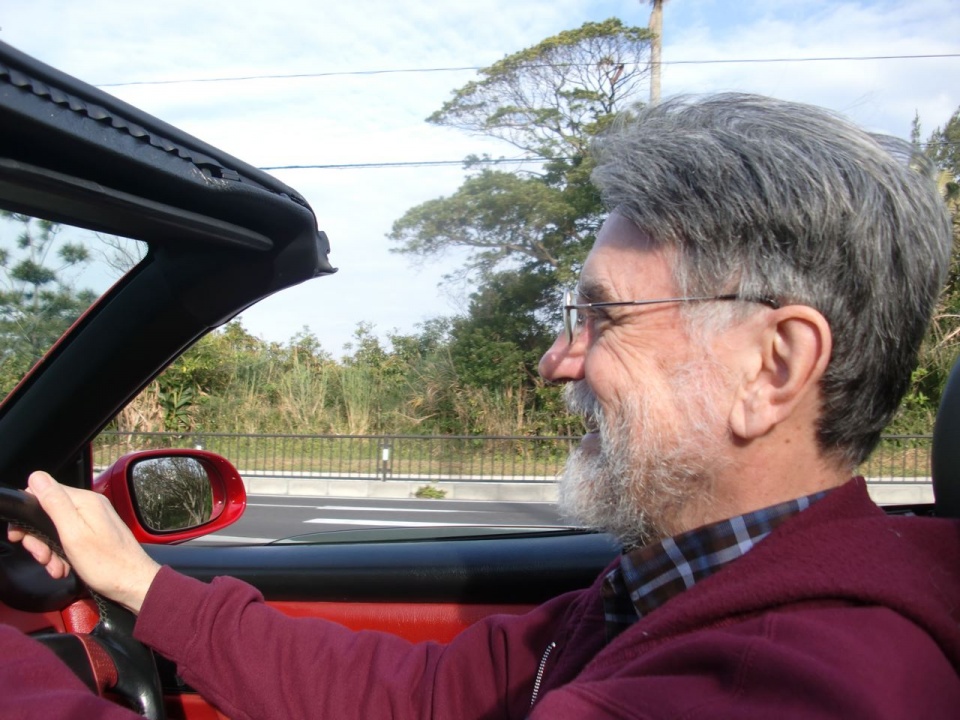
|
Affiliation: |
OIST |
| URL: | |
|
About: |
I've been an experimental neuroscientist since before there were such things existed. Physiology covered the nervous system as well! I hope I can share some of the scars from wrong turnings so that you can have a more direct access to modern neuroscience with less pain and more productivity. |
Upinder Bhalla
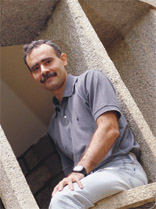
|
Affiliation: |
NCBS, India |
| URL: | |
|
About: |
I'm interested in the building blocks of memory, from the molecules that implement it, to the electrical signals that read/write it, to the networks that give it context. We've been building models at many scales to work on these questions. In addition to developing multiscale models of memory processes, we've also been developing the tools with which to implement these models, such as the GENESIS simulator in years gone by, and now the MOOSE simulator. We also do experiments to record brain and network activity as mice (and brain slices) learn associations. |
Claudia Clopath
|
Affiliation: |
Imperial College London, UK |
| URL: | |
|
About: |
I am a Lecturer (equivalent to Assistant Professor) in the Bioengineering Department at Imperial College London, and head of the Computational Neuroscience Laboratory. After having studied Physics at the EPFL, I did a PhD in Wulfram Gerstner's lab, a first postdoc with Nicolas Brunel, and a second postdoctoral research fellowship in the Center for Theoretical Neuroscience at Columbia University. I am broadly interested in the field of neuroscience, especially insofar as it addresses the questions of learning and memory. I use mathematical and computational tools to model synaptic plasticity, and to study its functional implication in artificial neural networks. |
Erik De Schutter

|
Affiliation: |
OIST |
| URL: | |
|
About: |
I have been teaching for more than 10 years at European CNS summer schools and was part of the last six OCNCs. It is always exciting to meet the diverse groups of highly motivated young scientists attending our courses. Summer courses have an important function in teaching computational methods and approaches, and in establishing social networks among the participants. Ideally every neuroscientist, including experimentalists and clinicians, should attend a CNS course because computational methods have become essential tools to understand the complex systems we are studying. There is a broad range of modeling approaches available. I have specialized in data-driven, bottom-up methods that are more accessible to experimentalists because they are mainly parameter driven. This includes large compartmental models of neurons with active dendrites, networks with realistic connectivity using conductance based neuron models and reaction-diffusion models of molecular interactions. I will not have time to present much of our research, but feel free to ask me or my collaborators about our work! Most of the work in my lab concerns the cerebellum, including its main neuron the Purkinje cell. |
Kenji Doya
|
Affiliation: |
OIST |
| URL: | |
|
About: |
Kenji Doya took BS in 1984, MS in 1986, and Ph.D. in 1991 at U. Tokyo. He became a research associate at U. Tokyo in 1986, U. C. San Diego in 1991, and Salk Institute in 1993. He joined ATR in 1994 and became the head of Computational Neurobiology Department, ATR Computational Neuroscience Laboratories in 2003. In 2004, he was appointed as the principal investigator of Neural Computation Unit, Okinawa Institute of Science and Technology (OIST) and started Okinawa Computational Neuroscience Course (OCNC) as the chief organizer. As OIST re-established itself as a graduate university in 2011, he became a professor and the vice provost for research. He serves as the co-editor in chief of Neural Networks from 2008. He is interested in understanding the functions of basal ganglia and neuromodulators based on the theory of reinforcement learning. |
Jason Kerr
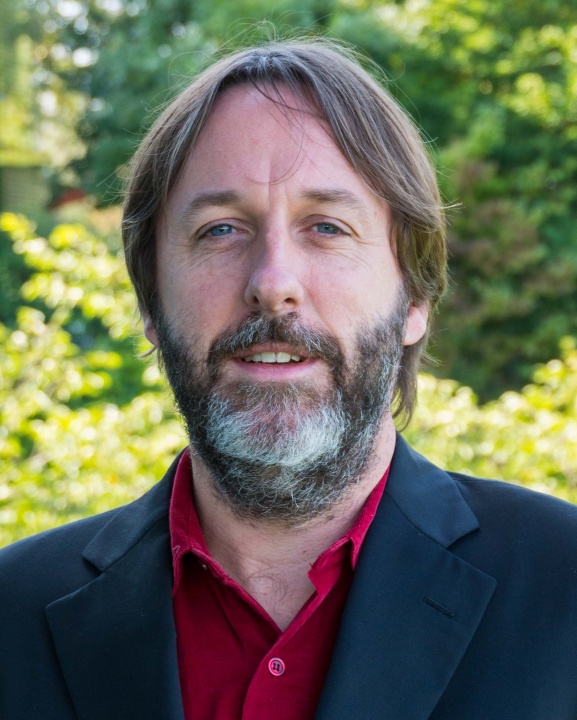
|
Affiliation: |
Max Planck Institute for Biological Cybernetics |
| URL: |
http://www.kyb.tuebingen.mpg.de/nc/employee/details/jkerr.html |
|
About: |
Study of Human Anatomy, Otago University, Dunedin/New Zealand, PhD (1999), postdoctoral fellow at National Institute of Mental Health, Bethesda/USA (1999-2003) and at Max Planck Institute for Medical Research, Heidelberg (2003-2006), Group Leader at Max Planck Institute for Biological Cybernetics, Tübingen (2006-2013), Scientific Member of the Max Planck Society (since 2013), Director of the Dept. Behavior and Brain Organization at Research Center caesar, Bonn (since 2013). |
Bernd Kuhn
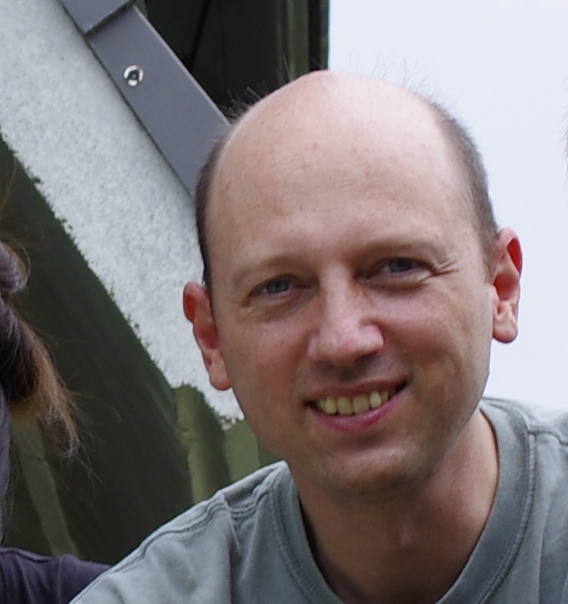
|
Affiliation: |
OIST |
| URL: | |
|
About: |
In my lab we focus on cellular imaging in awake mice. My main interest is dendritic information processing. |
Javier Medina

|
Affiliation: |
University of Pennsylvania, USA |
| URL: | |
|
About: |
I was born in Madrid, but my family moved soon after and I was lucky to grow up in sunny Malaga on the Mediterranean coast of Spain. After high school, I came to the United States with a full-tuition college scholarship, and I have spent the rest of my life in different parts of this big country. I received dual BS degrees in Physics and in Computer Science from Drexel University (Philadelphia) in 1993, and a PhD in Neuroscience from The University of Texas (Houston) in 2000. My thesis work and subsequent post-doctoral studies at The University of California (San Francisco) have a common goal that continues to drive my research program today: to achieve a full mechanistic understanding of how the brain learns to control our movements with precision. Since 2008, I have been an assistant professor in the Psychology Department at The University of Pennsylvania (Philadelphia, again!). My laboratory is currently using computational approaches and tools from pharmacology, in vivo neurophysiology and optogenetics to examine how olivo-cerebellar circuits contribute to simple forms of motor learning in mice. |
Hiroyuki Nakahara
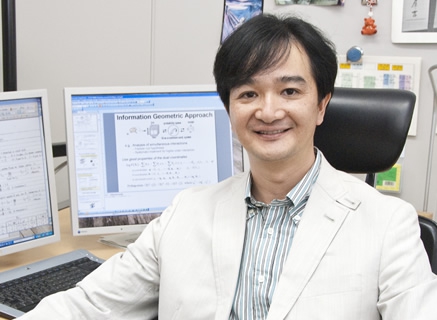
|
Affiliation: |
RIKEN BSI, Japan |
| URL: | |
|
About: |
We are at RIKEN Brain Science Institute, which locates in a greater Tokyo area. The long-term goal of my laboratory is to understand the computational principles that underlie the way neural systems realize adaptive decision-making and associated learning. Thus, my primary interest is decision-making, while my secondary interest is neural coding. Being flexible and complex, decision-making can be best understood when behavioral-level complexity and related neural systems are mapped in computational frameworks that describe and model these systems. To address these computational questions through quantitative analysis, we build computational and mathematical models and analyze behavioral, neurophysiological, and imaging data, often closely integrated with experimental investigations. More specifically, we study decision-making guided by outcomes (i.e., value-based decision-making) with two particular emphases: 1) theory (reinforcement learning, RL) and 2) social cognition (social decision-making). We are interested in decision-making whereby learning the value of an outcome via reinforcement is complemented by learning about the environment, for example, task structures under RL and others’ mental processes under social decision-making. Well, perhaps, I should stop here. Please visit our lab website http://www.itn.brain.riken.jp for those interested in more about our research and/or my background/CV. I would just like to say that I am looking forward to meeting you all in the summer school. |
Yael Niv

|
Affiliation: |
Princeton University, USA |
| URL: | |
|
About: |
Yael Niv is assistant professor of Psychology and Neuroscience at Princeton University. Her work utilizes computational models and empirical investigations of rat and human learning and decision making, as well as human neuroimaging, to investigate the processes of reinforcement learning in the brain. In particular, she is trying to understand how reinforcement learning occurs in tasks of real-world complexity: how do we learn with highly multidimensional stimuli, from tasks that have hierarchical or other hidden structure, and how do learning predispositions affect this process. |
Tony Prescott
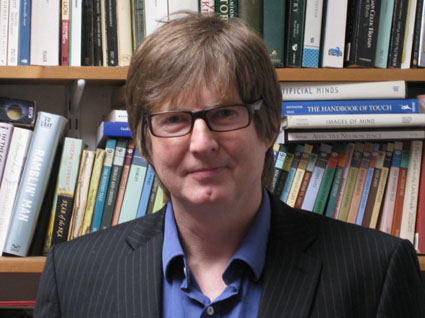
|
Affiliation: |
University of Sheffield, UK |
| URL: | |
|
About: |
Tony Prescott is a Professor of Cognitive Neuroscience at the University of Sheffield in South Yorkshire, UK, a Fellow of the British Psychological Society, and Director of the Active Touch Laboratory in Sheffield (ATL@S). His research lies within the biological and brain sciences, and is particularly concerned with understanding the evolution, development, and function of natural intelligence. A strong focus is on the investigation of computational neuroscience models of animal and human intelligence and in testing these models in biomimetic robots. He has authored over 120 publications in journals, international conference proceedings, and edited books. With his collaborators he has developed a variety of biomimetic systems, including the whiskered robots Scratchbot and Shrewbot, and social and haptic capabilities for the humanoid iCub robot. Since 2011 he has been the Director of the Sheffield Centre for Robotics (SCentRo) a cross-institutional robotics facility with over fifty active researchers. |
Ivan Soltesz
|
Affiliation: |
UC Irvine, USA |
| URL: | |
|
About: |
I am currently Chancellor’s Professor and Chair at the University of California, Irvine. My major research interest is focused on GABAergic interneuronal microcircuits, neuronal oscillations, and the cellular and synaptic basis of network dysfunction in epilepsy. My laboratory employs a combination of closely integrated experimental and theoretical techniques, including closed-loop in vivo optogenetics, paired patch clamp recordings, in vivo recordings from identified interneurons in awake mice, optical imaging, and biologically realistic, strictly data-driven, large-scale computational modeling methods using supercomputers. In terms of synergistic activities, I wrote a monograph book on GABAergic microcircuits entitled Diversity in the Neuronal Machine (Oxford University Press), co-edited a book on Computational Neuroscience in Epilepsy (Academic Press/Elsevier) and co-founded the first Gordon Research Conference on the mechanisms of neuronal synchronization and epilepsy. I have received major awards including the Javits Neuroscience Investigator award from NIH and the Research Recognition lifetime achievement award from the American Epilepsy Society. I have over 30 years of research experience, with 19 years as a faculty at UCI involved in the training of graduate students and postdoctoral fellows, several of whom received fellowship awards, joined prestigious residency programs and became independent faculty. |
Gregory Stephens

|
Affiliation: |
OIST |
| URL: | |
|
About: |
My research in theoretical biophysics is focused on the interface of physics and biology, broadly defined, and I explore a diverse set of problems ranging from the behavior of small organisms to the natural dynamics of human cognition. In all of my efforts I combine cross-disciplinary experimental collaborations with ideas drawn broadly from such areas as statistical physics, dynamical systems and information theory to seek unifying principles and simple, functional understanding in living systems. Trained in quantum gravity and early universe cosmology, as I switched focus, I was fortunate to experience a course such as this one and I hope that you will enjoy a similarly remarkable experience. |
Greg Stuart

|
Affiliation: |
Eccles Institute of Neuroscience, Australia |
| URL: | |
|
About: |
I run a lab at the Australian National University in Canberra (Australia). I started out looking at muscle spindles (receptors in your muscles that detect muscle length), then worked my way up to the spinal cord, where I got my PhD looking at inhibition. For my postdoc I moved to Germany and started working in the cortex, where I developed techniques for recording from dendrites. My primary focus is on how single neurons process information, and as most of the information neurons receive is made onto their dendrites understanding the properties and function of dendrites has been something I have been interested in for a while. In the lab we use both electrophysiology (patch clamp) and imaging techniques, primarily in brain slices although I am moving more in vivo, and often combine experimental observations with modeling (mostly single cell using NEURON). |
Taro Toyoizumi
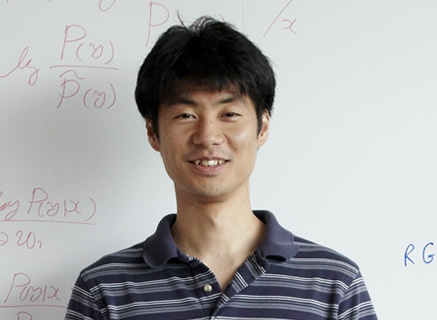
|
Affiliation: |
RIKEN BSI, Japan |
| URL: | |
|
About: |
Our research is in the field of Computational Neuroscience. Computer models are used to study how information is processed in the brain and how the brain circuits adapt to and learn from the environment. We employ analytical techniques from statistical physics and information theory to investigate key functional properties for neuronal circuits. We use these techniques to reduce diverse experimental findings into a few core concepts that robustly explain the phenomena of interest. We are particularly interested in activity-dependent forms of plasticity in the brain, which are known to have large impacts on learning, memory, and development. With the aid of mathematical models, we seek a theory that unites the cellular level plasticity rules and the circuit level adaptation in different brain areas and animal species. Efficacy of neurons to represent and retain information is estimated from the structure and behavior of resulting circuits. |
Tutors
Akihiro Funamizu
| Affiliation | OIST |
| Expertise: |
Scientific interests: Decision making, Perceptual learning, Neural implementation of machine learning (e.g., reinforcement learning or Bayesian theorem) Paper: Funamizu A. et al., Eur J Neurosci, Vol.35(7), pp.1180-1189, 2012. Scientific expertise: Reinforcement learning and Bayesian theorem (Basic). These algorithms are used to model the behaviors of humans and animals.Making a behavioral task from a machine-learning point of view Expert of brain areas: Auditory cortex, Parietal cortex, Basal Ganglia circuit. Neuroscience topics: Two-photon microscopy, Extra-cellular recording Software expertise: Matlab |
Sungho Hong

| Affiliation | OIST |
| Expertise: |
Scientific interests: I am interested in how various building blocks of neural systems work together, broadly speaking. A main focus of my research is studying how biophysical mechanisms in neurons and networks impact their functions via computational modeling. Selected recent papers: Hong, S., Ratté, S., Prescott, S.A., and De Schutter, E. (2012). Single neuron firing properties impact correlation-based population coding. J Neurosci 32, 1413–1428. Anwar, H., Hong, S., and De Schutter, E. (2012). Controlling Ca2+-activated K+ channels with models of Ca2+ buffering in Purkinje cells. Cerebellum 11, 681–693. Scientific expertise: I have expertise in detailed modeling of single neurons including ion channels and intracellular ion dynamics. I have some experience in data analysis with statistical modeling such as LN model, compressive sensing, and a few other things. I am mostly familiar with the cerebellar cortex. Software expertise: NEURON and Python. I also program in Matlab. |
Jun Igarashi
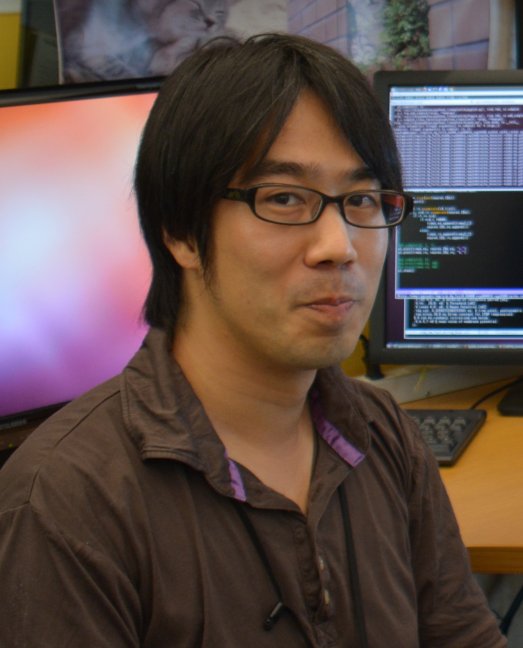
| Affiliation | OIST |
| Expertise: |
My scientific interests is information processing by oscillatory neural activities, in particular, frequency-coupling theta and gamma oscillations in cortices [1]. My technical interest is a large-scale and real-time simulation using interesting devices, GPUs (CUDA), supercomputers [2]. Recently, I have been developing a model of cortico-thalamic circuits corresponding to motor region toward for understanding the mechanism of Parkinson's disease symptoms and information processing in movement behaviours using NEST simulator on Japanese supercomputer "K". In data analysis and visualization, I mainly use Python and C language.
[1] Igarashi J, Isomura Y, Arai K, Harukuni R, Fukai T. A θ-γ oscillation code for neuronal coordination during motor behavior. J Neurosci. 2013, 33, 18515-30. [2] Igarashi J, Shouno O, Fukai T, Tsujino H. Real-time simulation of a spiking neural network model of the basal ganglia circuitry using general purpose computing on graphics processing units.Neural Netw. 2011, 24, 950-60. |
Daniele Linaro
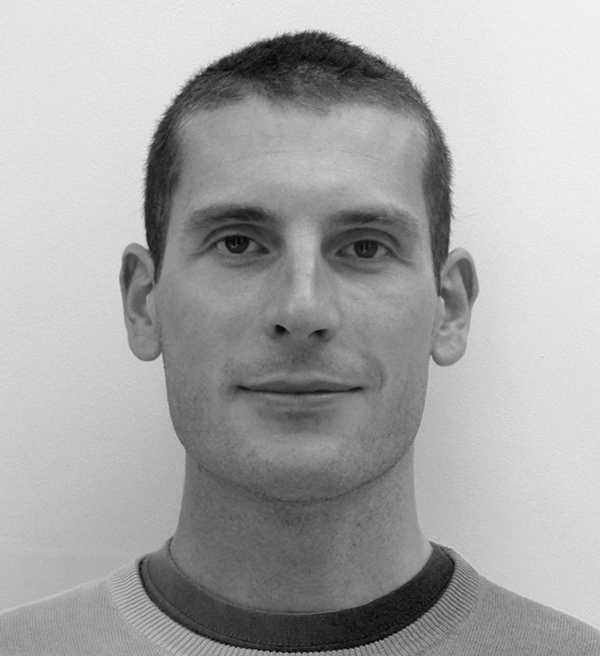
| Affiliation |
University of Antwerp |
| Expertise: |
Scientific interests: I am broadly interested in the computational capabilities of individual neurons. In the field of computational neuroscience, my main interests are in the analysis of simplified neuron models using analytical and numerical tools coming from dynamical systems theory, as well as in the study of the impact of channel noise on the intrinsic properties of cells. From an experimental point of view, my main interests concern the study of dynamical response properties of individual neurons and their capability to relay correlations delivered via simulated correlated synaptic inputs. In my experiments, I use a combination of computational and experimental techniques, based on the dynamic clamp technique: for this, I have developed an experimental toolbox that simplifies the execution of real-time closed-loop experiments. Finally, I have recently started investigating how correlations among spike trains in the mouse visual cortex are modulated by locomotion in an awake, head-fixed preparation. Five key publications: D. Linaro, J. Couto, and M. Giugliano, “Command-line cellular electrophysiology for conventional and real-time closed-loop experiments,” Journal of Neuroscience Methods, vol. 230, pp. 5 – 19, 2014. I. Espuny-Camacho, K. Michelsen, D. Gall, D. Linaro, A. Hasche, J. Bonnefont, C. Bali, D. Orduz, A. Bilheu, A. Herpoel, N. Lambert, N. Gaspard, S. Pron, S. Schiffmann, M. Giugliano, A. Gaillard, and P. Vanderhaeghen, “Pyramidal neurons derived from human pluripotent stem cells integrate efficiently into mouse brain circuits in vivo,” Neuron, vol. 77, no. 3, pp. 440 – 456, 2013. D. Linaro, M. Storace, and M. Mattia, “Inferring network dynamics and neuron properties from population recordings,” Frontiers in Computational Neuroscience, vol. 5, no. 43, 2011. D. Linaro, M. Storace, and M. Giugliano, “Accurate and fast simulation of channel noise in conductance-based model neurons by diffusion approximation,” PLoS Computational Biology, vol. 7, no. 3, p. e1001102, 03 2011. M. Storace, D. Linaro, and E. de Lange, “The Hindmarsh-Rose neuron model: bifurcation analysis and piecewise-linear approximations,” Chaos, vol. 18, no. 3, pp. 033128(1–10), Sept. 2008. Scientific expertise: I have used both simplified neuron models (mostly the Hindmarsh-Rose model, but also models of the integrate-and-fire family) and Hodgkin-Huxley models. Experimentally, I am working exclusively in rodents, mostly in primary sensory areas of the neocortex, such as primary somatosensory cortex (for most of my in vitro work) and primary visual cortex (for the in vivo experiments). Software expertise: NEURON, Matlab, Python |
Jorge F. Mejias

| Affiliation |
New York University |
| Expertise: |
Scientific interests: My main scientific interest is to understand the properties and dynamics of neural circuits, focusing on synaptic dynamics and neural heterogeneity. More precisely, I am interested in: (i) the role of synaptic plasticity on neural networks, both short-term (http://www.ugr.es/~jmejias/files/versiones-propias/mejias09neco.pdf) and long-term (http://www.ploscompbiol.org/article/info%3Adoi%2F10.1371%2Fjournal.pcbi.1003180). (ii) the effects of heterogeneity on both small cortical circuits and large-scale brain dynamics, a topic that I have embraced in the last years (http://www.ugr.es/~jmejias/files/versiones-propias/mejias12prl.pdf). Scientific expertise: I have experience working with a wide range of neural network models, from Hopfield-like attractor networks to simple Wilson-Cowan rate models, and including spiking neural networks with different degrees of biological realism. Using these formalisms, I have studied electrosensory (cerebellar-like) systems, small cortical circuits displaying short-term synaptic plasticity, and more recently, large-scale brain dynamics. Software expertise: I usually build my own C code for heavy spiking network simulations (frequently aided by GSL and TISEAN tools), and I use Matlab/Octave for lighter simulations and when important data processing is needed. I also like to use XPPAUT for analyzing toy models and getting a better insight of the dynamics behind my models. |
Jan Moren
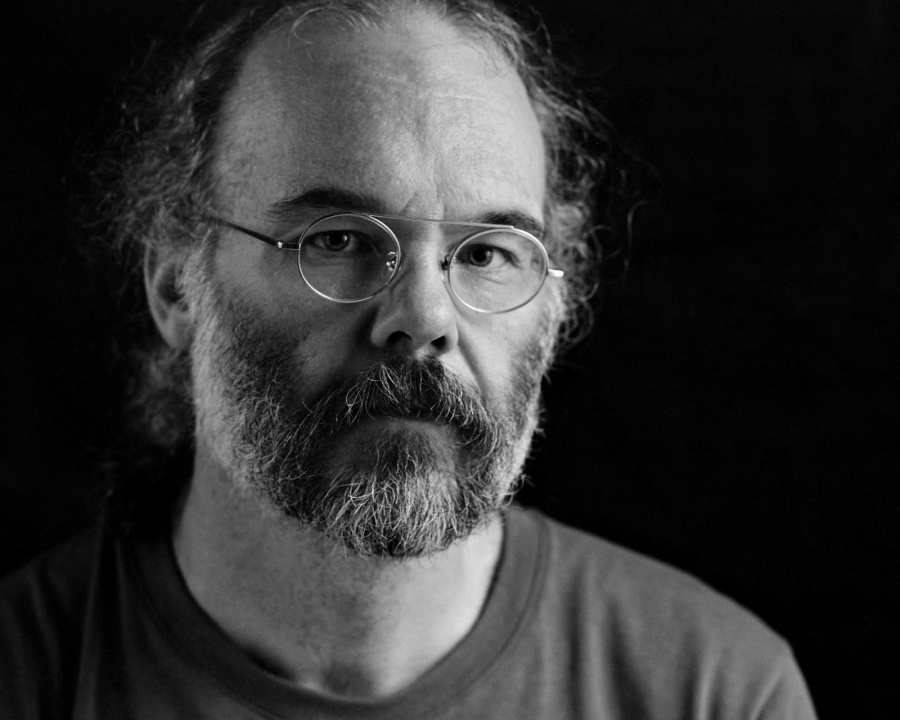
| Affiliation |
OIST |
| Expertise: |
I'm interested in computational neuroscience as well as in robotics. I'm originally a computer science graduate with a PhD in cognitive science, and my involvement in neuroscience comes from a desire to understand animal cognitive processes as a model for better artificial systems. My focus has been on subcortical areas, and on functions that we have in common with many other species, especially related to motivation and sensor-motor action loops. My thesis was on modelling the Amygdala as part of a reinforcement system. I've since worked on early attention and robot vision, and on large-scale modelling of the superior colliculus as the sensor-motor locus of an early visuomotor loop. I'm currently part of a project at Doya-lab at OIST to understand the precise neural mechanisms that underlies tremor symptoms in Parkinson's disease. That requires us to build fairly detailed models of several areas, including the basal ganglia; the motor cortex and associated thalamic areas; brainstem and spinal interneuron systems, and a muscleloskeletal model with the local motoneuron system. As we need substantial computing power to achieve this, we use the K supercomputer, and I work at the K supercomputing center in Kobe in order to facilitate this.
Papers: Morén, J., Ude, A., Koene, A., Cheng, G. (2008). Biologically Based Top-Down Attention Modulation for Humanoid Interactions. International Journal of Humanoid Robotics, Vol. 5, No. 1: pp. 3–24. (PDF: https://sites.google.com/site/janmoren/home/2008_MorenIJHR_V5N1A3.pdf?attredirects=0 ) Morén, J., Shibata, T., Doya, K. (2013). The Mechanism of Saccade Motor Pattern Generation Investigated by a Large-Scale Spiking Neuron Model of the Superior Colliculus. PloS One 8(2): e57134. doi:10.1371/journal.pone.0057134 (PDF: http://www.plosone.org/article/fetchObject.action?uri=info%3Adoi%2F10.1371%2Fjournal.pone.0057134&representation=PDF )
Expertise: I am well versed in a number of subcortical areas including the amygdala and the superior colliculus, as well as, lately, the basal ganglia and related areas, although I have no experience in experimental neuroscience. I'm familiar with low-level visual systems and attention mechanisms both from a neuroscience and engineering point of view. I use NEST, Python (including Numpy/Scipy/matplotlib) and C/C++ on a daily or regular basis. I also use R and Octave/Matlab when the need arises, though I'm far from expert, and my previous life as a software developer means I'm familiar with a large number of other languages and software tools, and can learn new ones without much trouble. |
Sam Neymotin
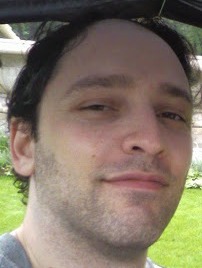
| Affiliation |
SUNY Downstate |
| Expertise: |
scientific interests: Neuronal computation, dynamics, & learning. PDF copies of all my papers are here: http://neurosimlab.org/publications.html scientific expertise: Biophysical modeling of neocortical (sensory, motor, visual, auditory areas) and hippocampal (CA3, CA1) microcircuits and using the models to understand mechanisms and function of neuronal oscillations, information transfer, learning (reinforcement and unsupervised learning), structure/function relations (eg graph theory). Models of single neurons, including molecular (calcium) dynamics. Analysis of electrophysiological data (single units, multi units, local field potentials, EEG). software expertise: I use the NEURON simulator and Python daily. Once in a while I use Matlab. |
Nikon Rasumov
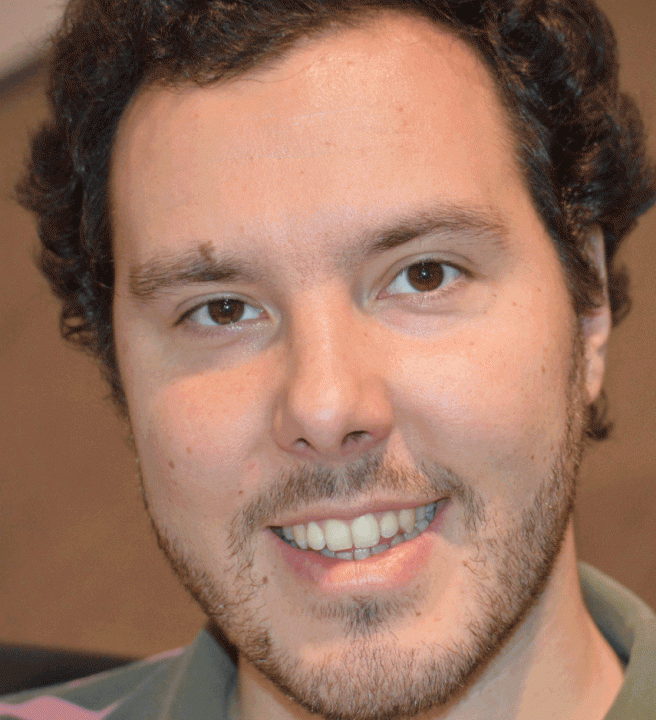
| Affiliation | OIST |
| Expertise: |
scientific expertise: I worked on the photoreceptor in the blowfly and locust retina, LTD in Purkinje Cells, retina topic maps and molecular computations. software expertise: Matlab, Python, STEPS |
Ben Torben-Nielsen

| Affiliation | OIST |
| Expertise: |
scientific interests: Single neuron computation and the influence of dendrites on these computations. Neuronal morphology Computations performed in the Olivo-cerebellar loop Selected publications: (2014) Torben-Nielsen, B., Synthetic neuronal morphology. Encyclopedia of Computational neuroscience, (2013) Memelli H.*, Torben-Nielsen B.*, Kozloski J. Self-referential forces are sufficient to explain different dendritic morphologies. Front. Neuroinform. 7:1 (2012) Torben-Nielsen B., Segev I., Yarom, Y., The generation of phase differences and frequency changes in a network model of Inferior Olive subthreshold oscillations. PLoS Comput Biol 8(7): e1002580. (2010) Torben-Nielsen B., Stiefel K.M., An inverse approach for elucidating dendritic function. Front. Comput. Neurosci. 4:128. doi:10.3389/fncom.2010.00128. scientific expertise: Dendrites, Sensory-motor cortex, Inferior olive, brain energy expenditure software expertise: NEURON, Python, parallel programming, optimization methods |
Participants
Mohamed Abdelhack
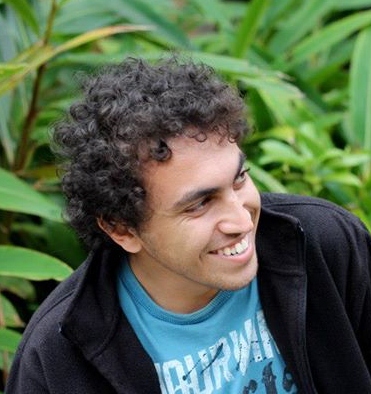
| Affiliation | OIST |
| About |
I am a PhD student in OIST. As the university describes I don't have one well defined discipline as I am studying the locomotion system of the nematode C. elegans. I study the physics of its body and environment, the muscle activation and forces generated, and the neuronal network responsible for the adaptability of locomotion pattern. I wish my PhD to be integrative between experimental work and computational. |
Luca Ambrogioni
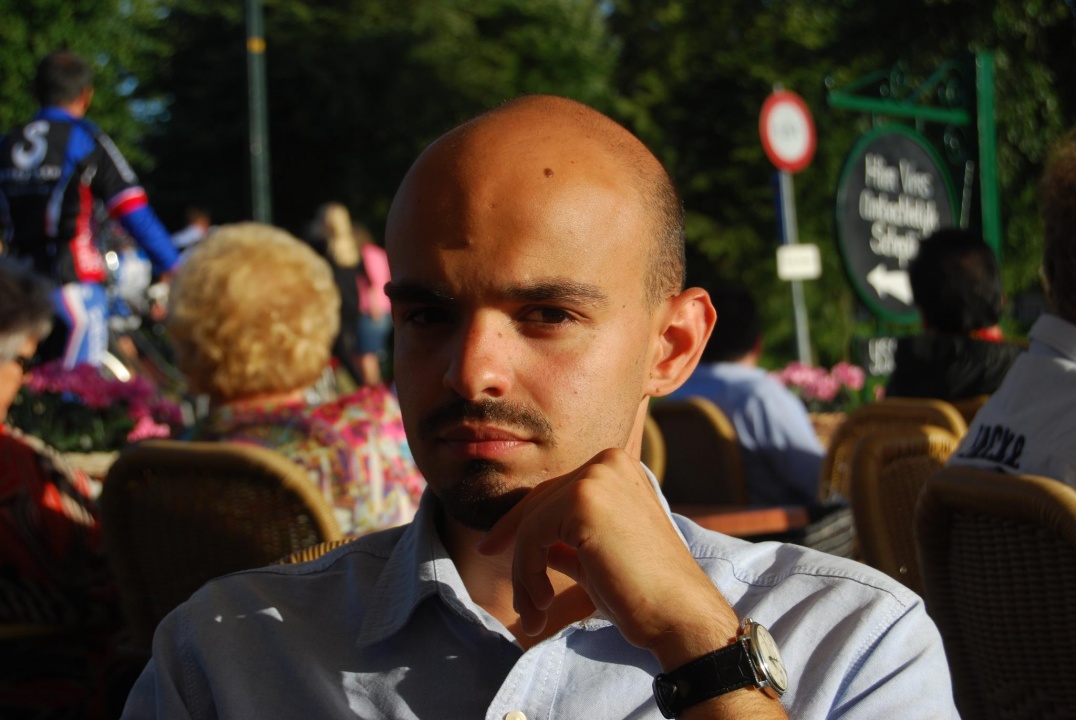
| Affiliation |
Radboud University |
| About |
I am currently a master student in computational/cognitive neuroscience, I am currently working on human effective connectivity during audio-visual integration. My passions are traveling and studying subjects I love like theoretical physics and mathematics. |
Hrvoje Augustin
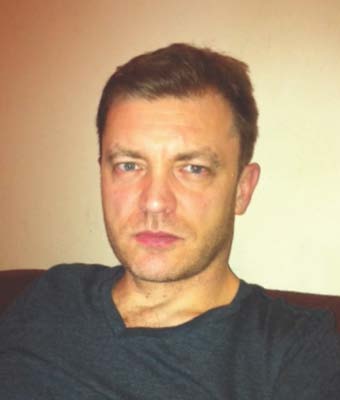
| Affiliation |
University College London |
| About |
I am a postdoc at University College London with a background in molecular/cell biology and neurophysiology. I study age-related changes in the nervous system of D. melanogaster; our electrophysiological experiments indicate that these changes occur in the escape-response pathway of the fruitfly, and suggest a way to alleviate them. I would like to build a computational model of the pathway with the goal of generating new testable hypotheses about the function of this neuronal circuit. I am also interested in modeling Drosophila larval neuromuscular junction. |
Guncha Bhasin

| Affiliation |
National Brain Research Centre |
| About |
I am an Integrated-Ph.D student from National Brain Research Centre, India. I am interested in understanding the neural mechanisms underlying spatial memory and navigation, by examining information processing in the hippocampal-parahippocampal network in the brain. I use in vivo neurophysiological recordings in awake, behaving rodents using multitetrode electrophysiological recordings. |
Eric Carmichael
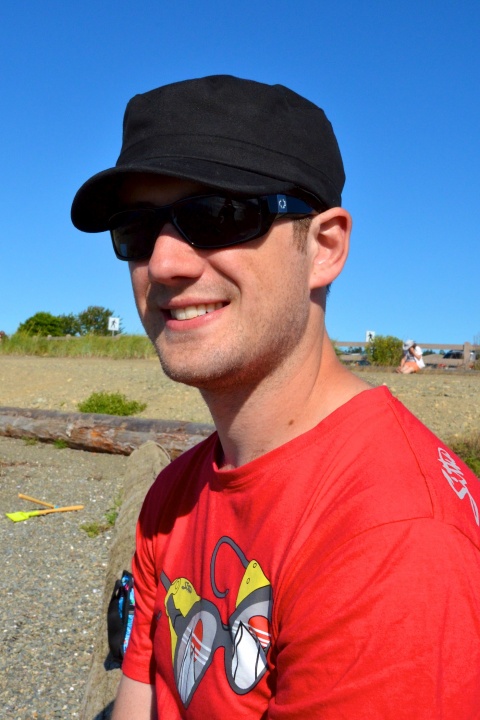
| Affiliation |
University of Waterloo, Canada |
| About |
I am a PhD student in the van der Meer lab where we study the hippocampus and ventral striatum using in vivo recordings. My main project looks at the distributions and relationships between different oscillations across the ventral striatum during a reinforcement learning task. I am excited to become more familiar with computational neuroscience in order to compliment and expand upon what I have seen in my recordings. |
Kit Cheung
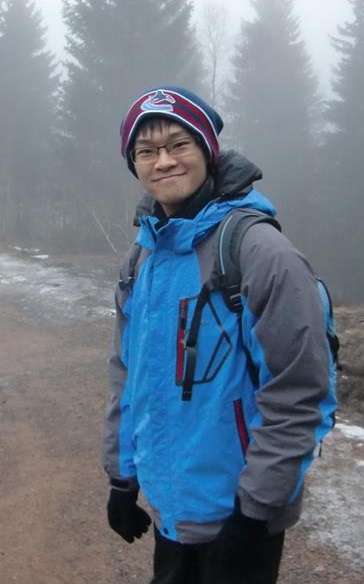
| Affiliation |
Imperial College London |
| About |
I am a PhD student from Imperial College London. My research interest is large-scale neural simulation. I have been working on a custom computing platform to accelerate simulation of spiking neural networks, and is currently working on functional rodent visual cortex models with columnar structure based on physiological parameters. お会いできるのを楽しみにしています! |
Yulia Dembitskaya
| Affiliation |
Nizhny Novgorod State University |
| About |
I am a PhD student at the Department of Neurobiology and Neurodynamics, Nizhny Novgorod State University, Russia. My background is in biophysics and I am doing experimental studies in neuroscience. I am interested in the physiology of neurons, astrocytes, their plasticity, and interactions with the extracellular matrix. More generally, I intrigued by normal brain physiology, learning and memory, aging, brain diseases and disorders. I believe OCNC will help me efficiently combine experimental and theoretical approach for my studying. |
Amadeus Dettner

| Affiliation |
Max Planck Institute for Brain Research |
| About |
I am looking forward to meet all of you this summer! I want to understand the coding mechanisms of neural networks. In my current project I am working on analytical and computational approaches to estimate the mutual information between the network response, a spike train ensemble, and its stimulus. With these methods I investigate how the connectivity of a network influences the information transfer depending on the statistical properties of the stimulus. |
Matías Alejandro Goldin
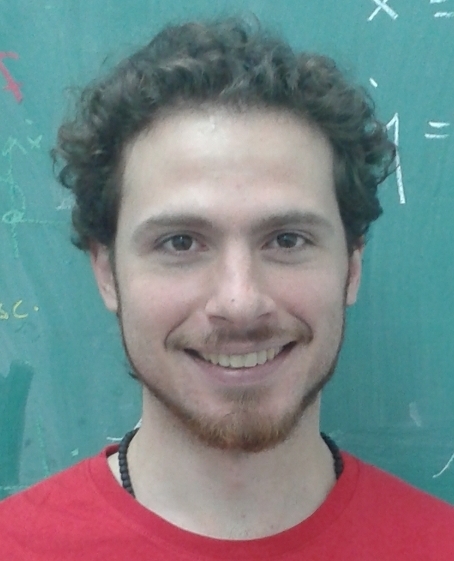
| Affiliation |
University of Buenos Aires, Physics Department |
| About |
I am interested in how complex motor patterns arise in animal behavior. In particular, during my PhD at the University of Buenos Aires, I worked on the brain mechanisms that give rise to the wide diversity of respiratory gestures involved in birdsong. My ideal way of working is in projects with a two way interaction between experiments and modeling. I love the questions that arise from nature, that inspire biophysical models, and the predictions that models imply and their aid to design experimental challenges. I am interested in designing new experiments to answer this kind of questions and bringing mathematical and physical analysis tools from the dynamical systems theory to the field of neuroscience. I currently have a postdoctoral position at the Dynamical Systems Laboratory at the University of Buenos Aires. I will try to understand with modeling, electrophysiological and temperature manipulation experiments, the brain architecture that is behind the coordinated motor instructions that arise in the birdsong motor pathway. |
Kerry Jayne Halupka
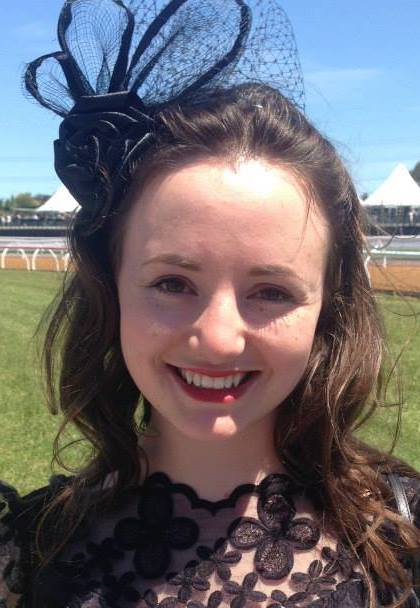
| Affiliation |
The University of Melbourne |
| About |
I am currently undertaking my PhD at The University of Melbourne, working on stimulation strategies for the Bionic Eye. Specifically, I am attempting to create a model to accurately predict the cortical responses to electrical stimulation of the retina, and then to use that model to optimize stimulation strategies so as to achieve target patterns of activity in the cortex. I'm looking forward to meeting you all! |
Arif Hamid

| Affiliation |
University of Michigan, Ann Arbor |
| About |
I am broadly interested in how dopamine influences the intrinsic network dynamics and behavioral outputs of of the cortical-basal ganglia loops. More specifically, I seek to characterize how dopamine (through its effect on post synaptic neurons) affects motivation, valuation and action selection, and how dysregulation of dopaminergic systems lead to neuropsychiatric disorders. |
Riikka Havela
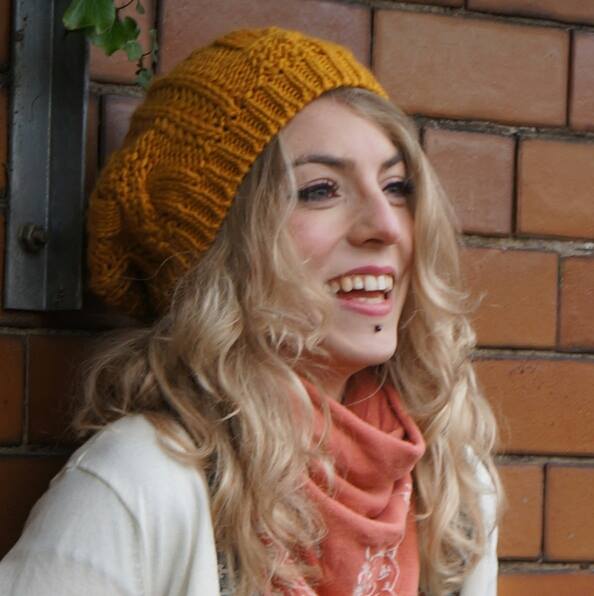
| Affiliation |
Tampere University of Technology, Tampere, Finland |
| About |
I'm a third year PhD student in Dr. Marja-Leena Linne's Computational Neuroscience Research Team. My background is in cell and molecular biology, and I've also studied some mathematics, physics and scientific computing. I'm interested in the molecular mechanisms that underlie plasticity and learning in the brain at the synaptic level. I've turned from a biologist into a modeler, in order to try and understand these phenomena. I like to interact with neuroscientists from all kinds of different backgrounds. See you all on Okinawa! |
Brian Hu
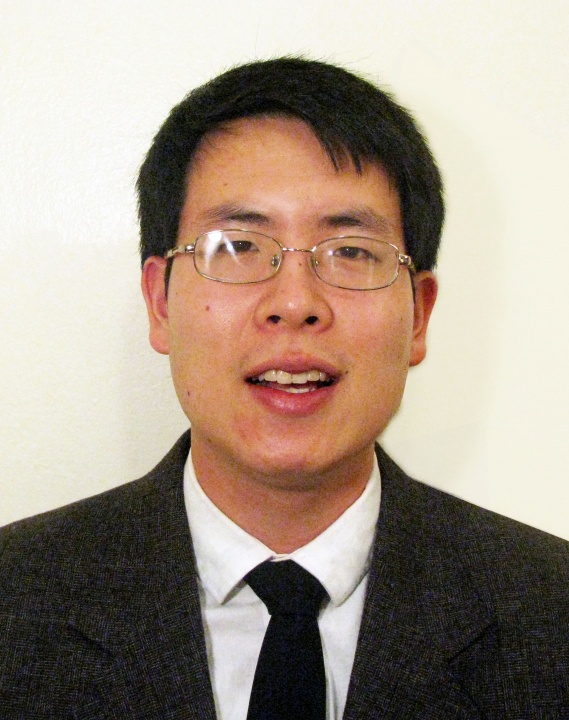
| Affiliation |
Johns Hopkins University |
| About |
I am a graduate student working with Dr. Ernst Niebur on models of surface-based vision and attention. I am interested in the intersection of biological and computer vision and particularly why humans see so well while computers, despite the immense computational resources they have access to, still continue to "see" so poorly. Computational neuroscience gives us an opportunity to bridge these two seemingly disparate fields that have largely advanced in parallel with little to no interaction. Fundamental computational principles from neuroscience can help better inform algorithms that are able to interpret the visual world around us and use that information for behavior. Looking forward to meeting everyone in Okinawa! |
David Hunt
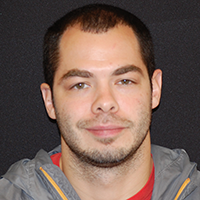
| Affiliation |
HHMI, Janelia farm |
| About |
I am a postdoc in Nelson Spruston's lab at HHMI, Janelia Farm. My current research focuses on the relationship between single cell biophysics and how these properties give rise to network dynamics in the hippocampus. |
Benjamin Lansdell
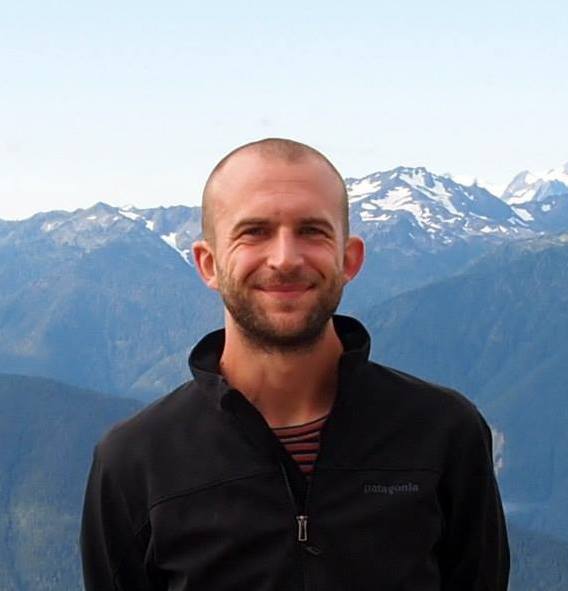
| Affiliation |
University of Washington |
| About |
Hello! I'm currently a PhD student in the applied mathematics department at the University of Washington. I'm from Australia originally, but have enjoyed spending the past few years living in Seattle. I've worked in bioinformatics in the past, and in mathematical biology. But for the past couple years of my Phd, I've been excited to be doing research in comp neuro. Currently my work is in brain-computer interfaces. I'm looking forward to meeting everyone, to learning more about the strange inner workings of our brains, and to visiting Japan. Cheers, Ben |
Li Yan McCurdy
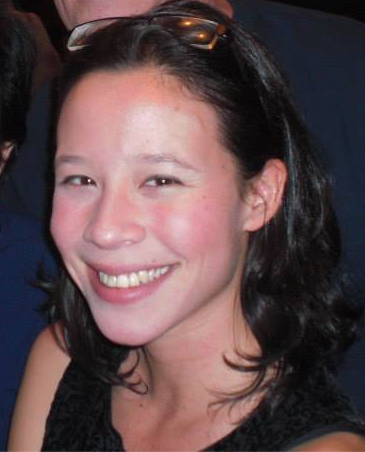
| Affiliation |
Yale University |
| About |
I'm a PhD student attempting to apply models of decision-making to invertebrate neurobiology. I've been tinkering around with behavioral and genetic experiments assaying how fruit-flies and worms make decisions in the face of conflicting stimuli, and I'm curious to see whether these animals with relatively simple nervous systems are capable of behaving in an optimal manner, as defined by computational models. I'm looking forward to learning about neuroscience from a computational perspective in Okinawa! |
Claire Monroy
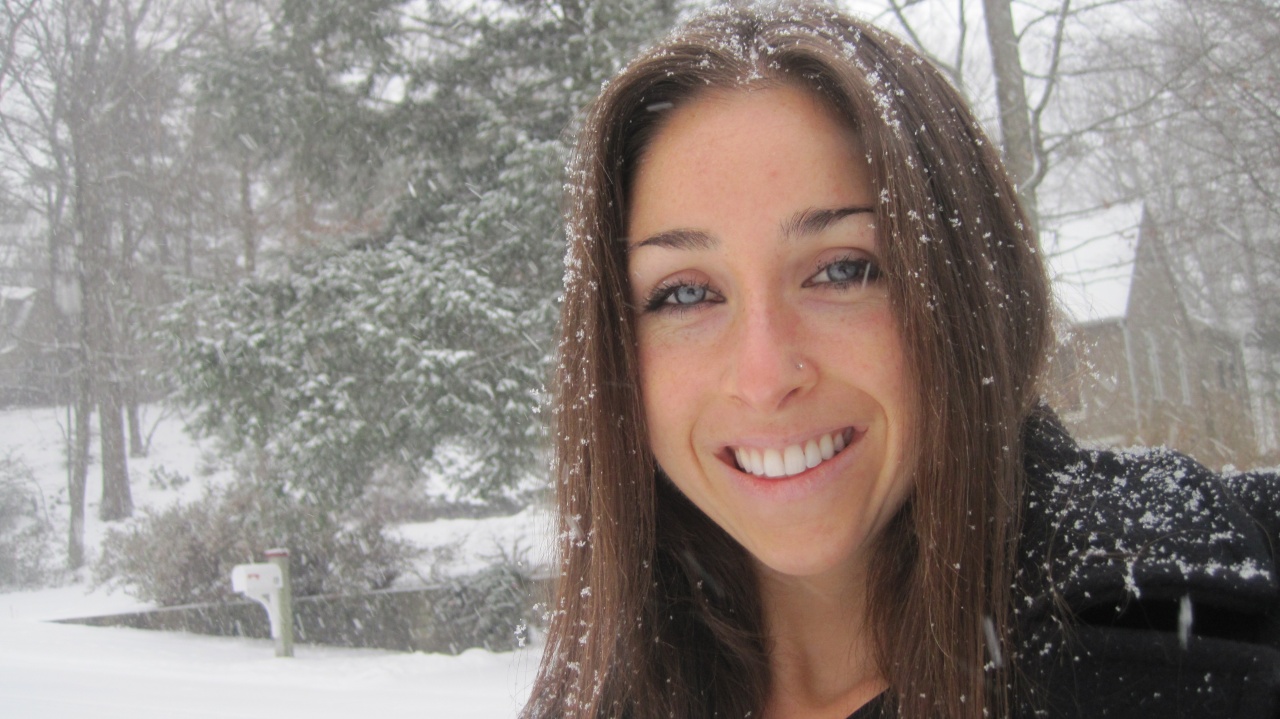
| Affiliation |
Donders Institute for Brain and Cognition |
| About |
I am a PhD student of developmental cognitive neuroscience in the Netherlands. My background experience includes social work and community outreach as well as molecular biology and systems neuroscience. My PhD research aims to investigate the development of cognitive mechanisms that drive action understanding in infancy using eye-tracking methods and EEG. I can't wait to meet everyone this summer in Okinawa! |
Timoleon Moraitis
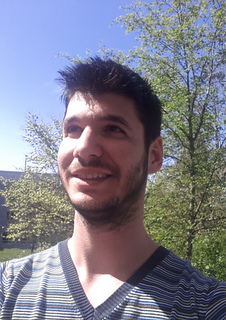
| Affiliation |
Institute of Neuroinformatics, University and ETH Zurich |
| About |
My current research interests focus on understanding how sensory inputs from hard-wired movements such as reflexes can influence our learnt motor performance, and on using these mechanisms for the benefit of artificial motor control systems. Methods I have used involve experimental investigations spanning from electrophysiology on a cellular level to psychophysics on a behavioural level, computational modelling and simulations, as well as neuromorphic engineering. Currently I am oriented towards applications of bio-inspired sensory-motor interactions on neuromorphic motor control. |
Ekaterina Morozova
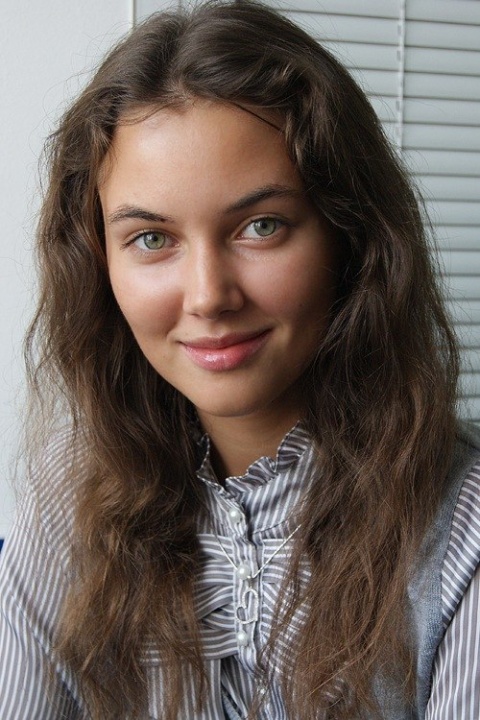
| Affiliation |
Indiana University Bloomington |
| About |
I am a Ph.D. student at physics department in IU Bloomington. I am interested in investigating brain dynamics and functional connectivity in both simulated and experimentally derived neural networks. A combination of experimental and computational approaches helps us to study the role of brain connectivity in cognition and behavior; how networks connectivity and dynamics changes under different conditions. |
Dinu-Mihai Patirniche
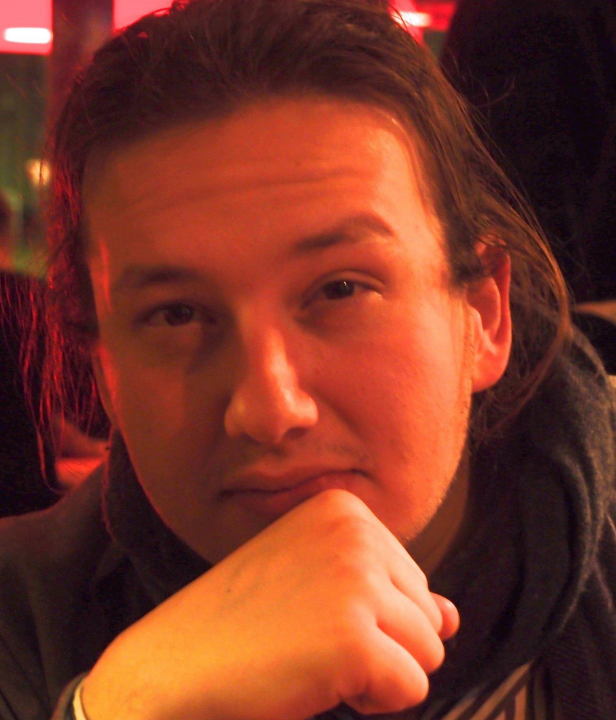
| Affiliation |
Bernstein Center for Computational Neuroscience Munich |
| About |
Not only, but very often, computational neuroscientist talk about codes, about algorithms that are implemented within some neural framework. Sure enough, these are interesting questions; relevant ones. Nonetheless, I devote most of my time trying to understand how it is possible to embed even the smallest amount of information within such a wet and dynamic structure as the brain. Specifically, I work on developing a numeric framework which will be able to simulate the Poisson-Nernst-Planck time-dependent system for ultrastructural geometries of 3D dendritic spines segmented from EM-tomography image-stacks. The high level of details and the biophysical realism will hopefully lead to a better understanding of how the synaptic weight is tuned by biological factors (i.e. size of the spine, number of receptors, the density of cytoskeletal elements, etc). |
William Podlaski
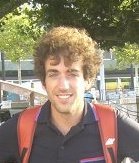
| Affiliation |
University of Oxford |
| About |
Hi everyone! My name is Bill, currently working as a researcher at Oxford and soon to be a graduate student. My interests are broad, but I am mainly concerned with stability and plasticity in spiking neural network models, especially in the context of neuromodulation. I'm looking forward to learning new skills and having some interesting discussions at OCNC. |
Rahul Kumar Rathour
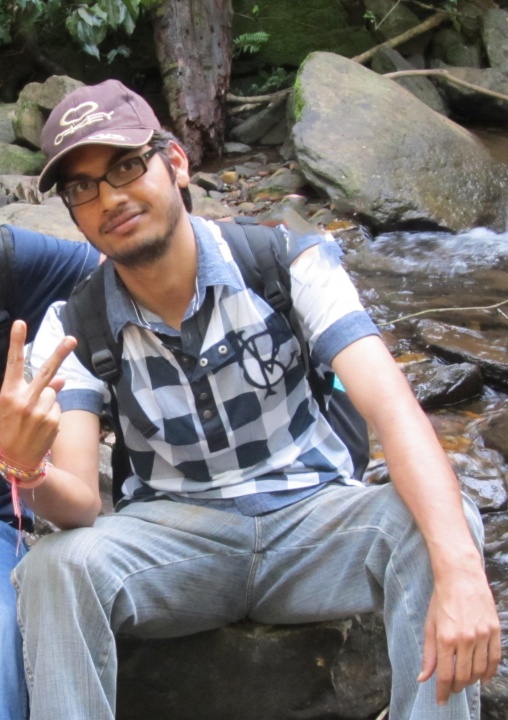
| Affiliation |
Indian Institute of Science Bangalore |
| About |
I am a PhD student at cellular neurophysiology laboratory, IISc Bangalore. I am interested in single neuron physiology and its role in determining network dynamics with special emphasis on voltage gated ion-channels. |
Martha Robinson

| Affiliation |
Insititue of Ophthalmology, University College London |
| About |
はじめまして! I'm a PhD student working in the Institute of Ophthalmology, a UCL institute associated with Moorfields Eye Hospital. My research focuses on how neural computation in the retina (as well as further upstream in the thalamus and cortex) is altered during diseases that lead to partial or total loss of vision. The Ali lab has developed several gene and cell therapies to rescue or replace the input cells that are lost or non-functional in these conditions, which gives me the unique opportunity to probe how 'visual' pathways that have never had certain kinds of visual input process this new information. More broadly, I am fascinated by how complex, stereotyped circuits develop from simple beginnings, and how resistant or 'plastic' they are to changes in inputs. |
Priyanka Saxena
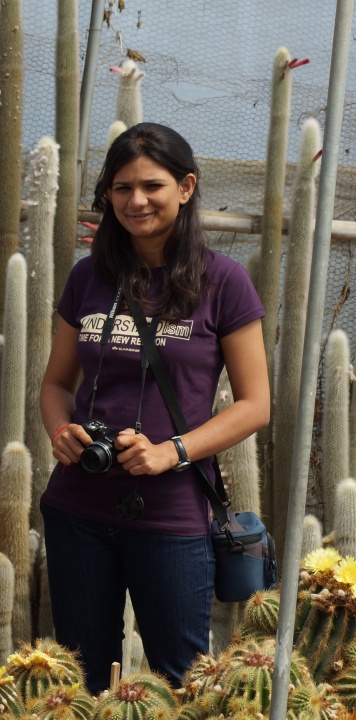
| Affiliation |
Institute of Genomics and Intergrative Biology, Delhi |
| About |
I am in general interested in understanding the simple(or maybe not) mathematics in the complex world of neurobiology. Of the many layers of complexity, I choose to work at the intracellular level. A number of responses can be generated from the same system depending on a number of variables like duration of the stimulus, nature of the stimulus, preexisting conditions in a neuron. My PhD research is aimed at understanding the contribution of some of these variables in generating not-so-intuitive experimentally observed result. Presently, I am working on a math model to understand the underpinnings of spacing effect. Apart from my research I am also passionate about teaching kids and understanding how kids learn. To be able to contribute to neurobiology so that we can someday improve how we teach kids is my biggest motivation.Looking forward to meeting you all! |
Manuel Schottdorf
| Affiliation |
Max Planck Institute for Dynamics and Self-Organization |
| About |
The robust and species invariant emergence of orientation selectivity in the visual cortex is puzzeling. Why is orientation selectivity so common despite the enormous diversity in both, visual environments and neural circuitry? Why is its spatial organization so remarkably subtle? Together with my PhD supervisors, Walter Stühmer and Fred Wolf, I try to shed some light on the underlying mechanisms using both experimental and theoretical approaches. At the OCNC, I will analyze experimental data and (hopefully) gain some insight into the relation of natural images and the spatial organization of visual cortical orientation selectivity. What else.. I like cookies. I studied physics. And I am looking forward to meeting you! |
Dana Sherman

| Affiliation |
Weizmann Institute of Science |
| About |
I am interested in understanding perception: how does our brain encodes and then decodes (i.e., perceives) the external world? I try to study this by developing a computational model of the rodents' vibrissal system, a neural network that innervates the rodent's facial hairs (whiskers), and allows them to perceive the external environment by encoding and decoding tactile information derived from the whiskers. Looking forward to see you all in Okinawa! |
Piotr Sokół
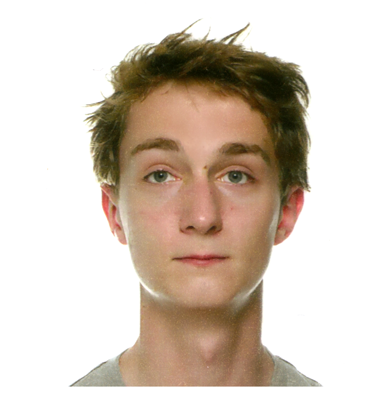
| Affiliation |
Erasmus MC/ Netherlands Institute for Neuroscience |
| About |
I am a research assistant at Erasmus MC and the Netherlands Institute for Neuroscience, where I work in Chris De Zeeuw's lab. The main focus on my work so far has been motor representation in the spinocerebellar system, with particular attention to the encoding afforded by the structure and electrophysiology of the Inferior Olive. In addition to biophysical computation, my scientific interests also include mathematics and computational statistics. Personally, I like contemporary literature, think David Foster Wallace, 90's rock, and talking to people, so I'm excited to meet all of you! |
Zhuoyi Song
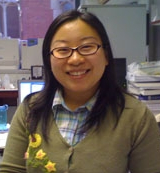
| Affiliation |
University College London |
| About |
My primary research interest is to study how sensory information is reliably and economically encoded by physiological systems. How do sensory neurons sample and process noisy input information reliably through unreliable stochastic biochemical reactions? How do they adapt continuously to better encode new stimuli? How does their structure and interconnections impact on the information encoding capabilities? I address these questions by constructing and analysing both deterministic and stochastic computational models, which can perform as virtual neurons and replicate their input-output relationships. Depending on the particular goal, a model can be constructed with different levels of complexities, ranging from black-box mathematical descriptions to detailed compartmental structures. The core of my PhD was to investigate the light information encoding mechanisms of fly photoreceptors. I constructed biophysically realistic fly photoreceptor models, which accurately simulate the encoding of visual information. By comparing stochastic simulations with single photoreceptor recordings, I showed how a photoreceptor uses a population of stochastically and adaptively operating units (30,000 microvilli) to sample photon information and robustly encode natural light changes. Crucially, the population coding dynamics reduces to elementary sampling rules, which could be general in sensory neuroscience. For example, I am currently working on how spatial-temperal stochastic adaptive sampling forsters motion processing in vision systems. Furthermore, I am also interested in investigating the role of stochasticity in biological systems. Stochastic reactions within well-defined structural compartments in biological systems could be beneficial for them to generate reliable responses. Rather than treating stochasticity simply as noise, its merits and costs become clear when modelled and analysed within the signalling processes, for example, with Monte Carlo simulation techniques. |
Ayaka Sugiura
| Affiliation |
University of Tokyo |
| About |
I usually do experiments using fMRI with human participants. I am interested in human itself, so I wish to know more about human by doing research in neuroscience. My research topic is motivation. During OCNC, I wish to learn about the ideas and methods of computational neuroscience. Looking forward to having discussion with you all! |
Sakurako Watanabe
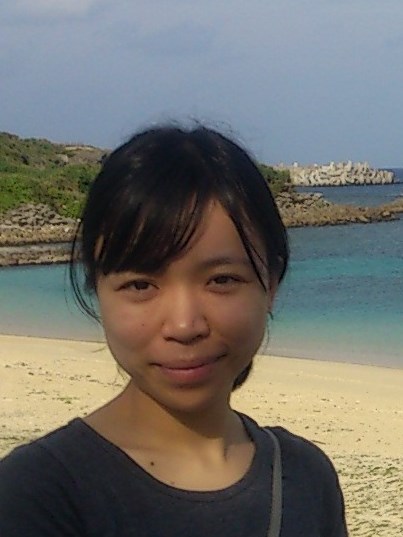
| Affiliation |
Okinawa Institute of Science and Technology Graduate University |
| About |
Welcome to Okinawa! I am a PhD student here at Okinawa Institute of Science and Technology Graduate University under the supervision of Prof Jeff Wickens. I am interested in the mechanisms of synaptic plasticity in the corticostriatal pathway in relation to learning and memory. I am also interested in the formation of episodic memory and the role of entorhinal cortex. As an experimental neuroscientist, I am excited to learn and develop my skills in computational methods. I look forward meeting you all! |
Katherine C Wood
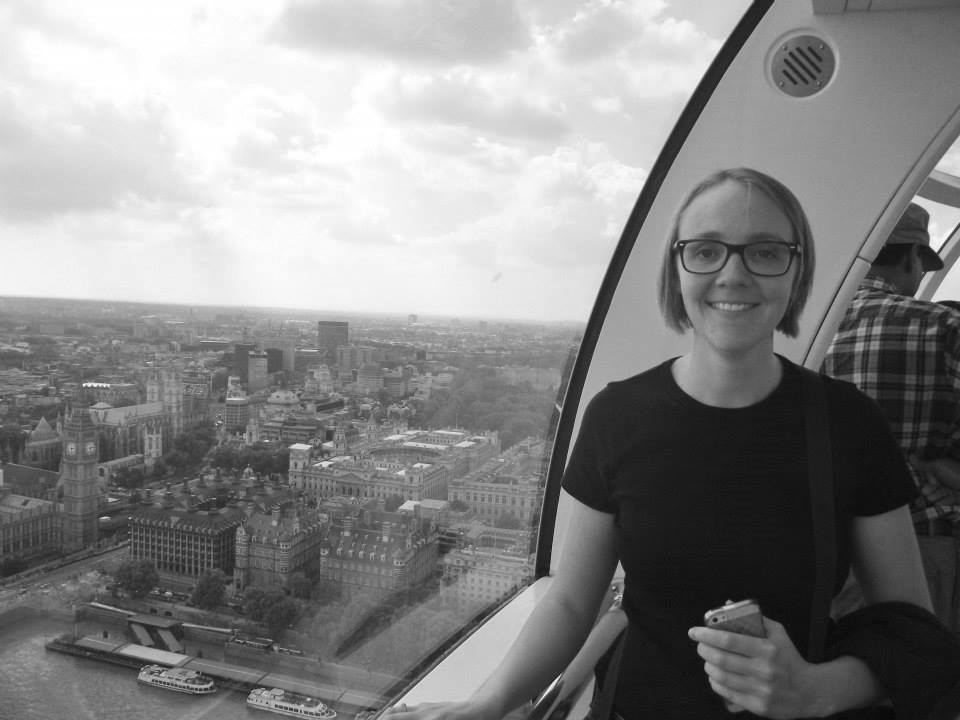
| Affiliation |
UCL |
| About |
Hi I am in the final year of my Phd and hoping to gain some useful insight into the data I have collected. My work involves trying to understand how neurons in auditory cortex code for the location of sounds. Looking forward to meeting everyone on the course. Kath |
Man Yi Yim

| Affiliation |
University of Hong Kong |
| About |
My research interest is to understand the computation of the brain using methods in physics, mathematics and computer simulations. In particular, I am fascinated by the dynamics of neuronal networks and the effects of different forms of stochasticity in the brain. Further, I am interested in exploring the neural correlates of cognition such as decision making and learning. Looking forward to the course and meeting you all! |
Yanfeng Zhang

| Affiliation |
Univerisity of Oxford |
| About |
I am a postdoc at University of Oxford and my research interests are understanding the role of cholinergic interneurons in the striatum and their related circuits which could be key targets for therapies in Parkinson’s disease. |
Asaph Zylbertal
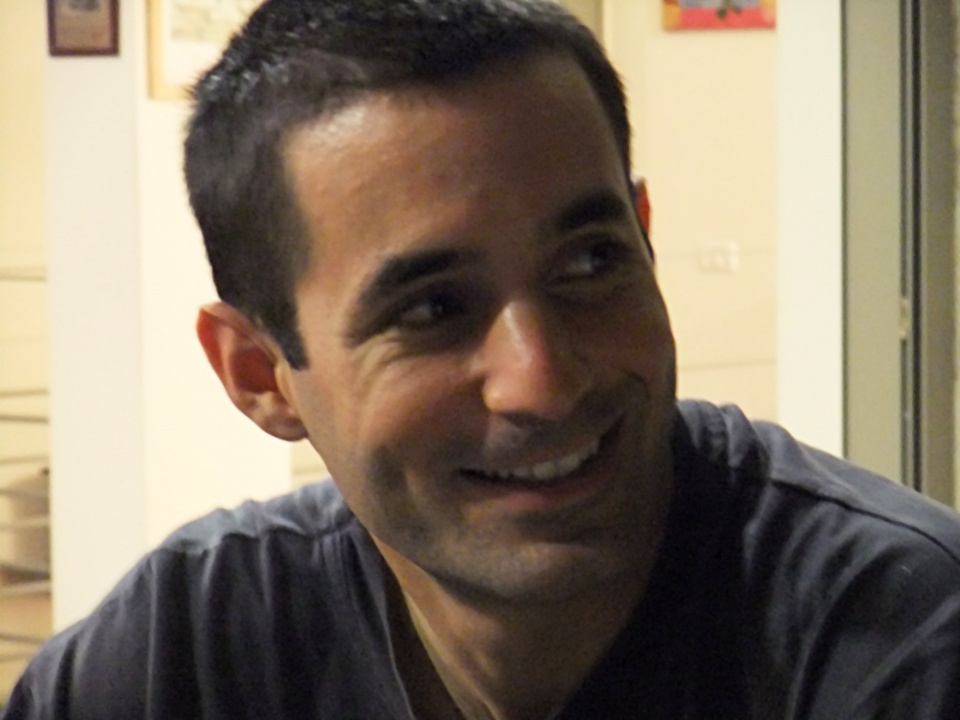
| Affiliation |
The Hebrew University, Jerusalem |
| About |
I'm a PhD student in an experimental neuroscience lab at the Hebrew University. My research work focuses on slow processes in accessory olfactory bulb mitral cells and how they modulate information processing in the network level. Recently I started using computational tools to complement my experimental work by developing a single cell model and going back and forth between the two methods. Given that my background is purely experimental, I would like to boost my computational skills in order to make my model more efficient and expand it to the network level. |



